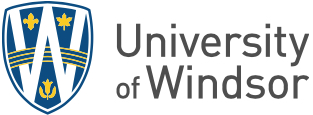 Otis Vacratsis is one of several scientists to receive a Golden Jubilee Research award. He'll use it to help better understand the basic science behind the causes of Chacot-Marie-Tooth disease.
Otis Vacratsis is one of several scientists to receive a Golden Jubilee Research award. He'll use it to help better understand the basic science behind the causes of Chacot-Marie-Tooth disease.
A better understanding of the basic causes of inheritable diseases like CMT will be just one of the many outcomes of a number of new research grants recently announced in the Faculty of Science.
Otis Vacratsis, a health researcher and associate professor in chemistry and biochemistry who studies the the biology of a lipid phosphatase enzyme that when mutated, causes Charcot-Marie-Tooth disease, was one of three recipients of the new Golden Jubilee Research Excellence Awards announced by vice-president, research Michael Siu and dean of science Marlys Koschinsky.
Made possible through the research stimulus fund, the two-year awards come with $40,000 a year in research funding and one course release per year. The other two recipients were Rob Schurko, a materials chemist in chemistry and biochemistry, and Dan Mennill, an ecologist in biological sciences.
Dr. Vacratsis said the funding will help him hire graduate students and post-doctoral fellows who will utilize a variety of analytical and biological techniques to better understand the cellular processes involved in CMT, a neuromuscular disorder characterized by loss of muscle mass and touch sensation across various parts of the body. Currently incurable, the disease is one of the most common inherited neurological disorders and affects about one in 2,500 people.
“We do very basic, fundamental science in my lab, but hopefully people will be able to use our findings in a clinical setting,” Vacratsis said.
Besides the Golden Jubilee awards, a number of scientists received Research Infrastructure Grants. They include:
- Ziad Kobti, computer science
- Michael Boffa, chemistry and biochemistry
- Jichang Wang, chemistry and biochemistry
- Daniel Mennill, biological sciences
- Barbara Zielinski, biological sciences
- Lisa Porter, biological sciences
- Luis Rueda, computer science
The Golden Jubilee awards and infrastructure grants were presented to outstanding researchers in thematic areas that constitute the backbone of the recast university’s strategic research plan, said Dr. Siu.
“The overall goal is to increase research capacity in the faculty by growing existing programs and by fostering new partnerships and new directions,” said Dr. Koschinsky. “In turn, this is expected to build on our funding success in areas of existing research strength through the attraction of incremental research dollars to science.”
